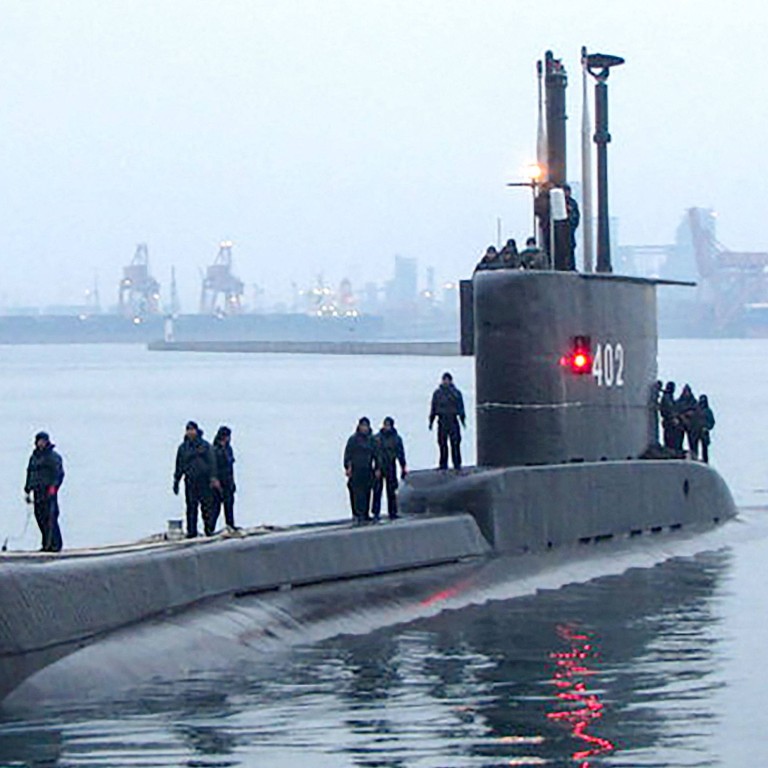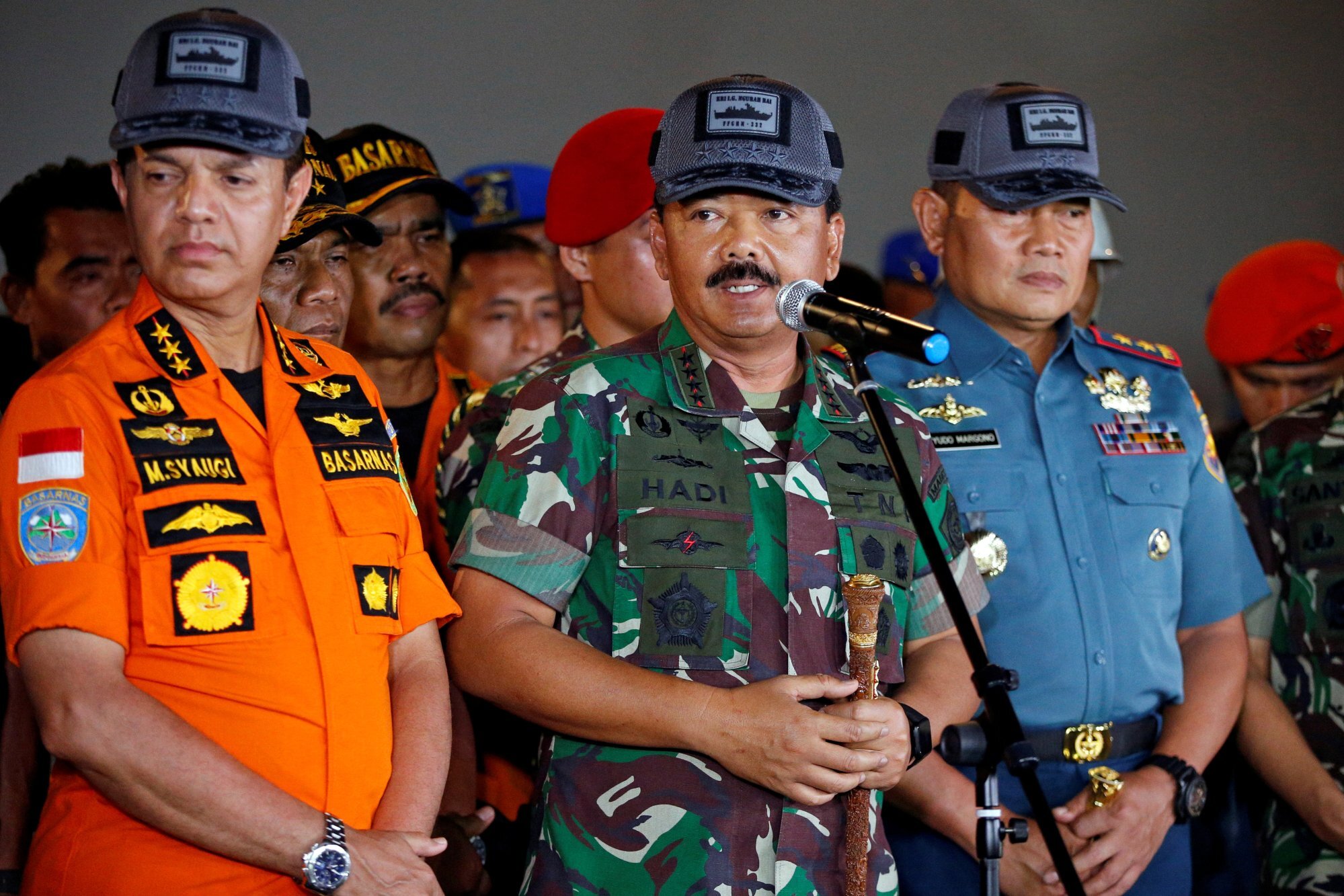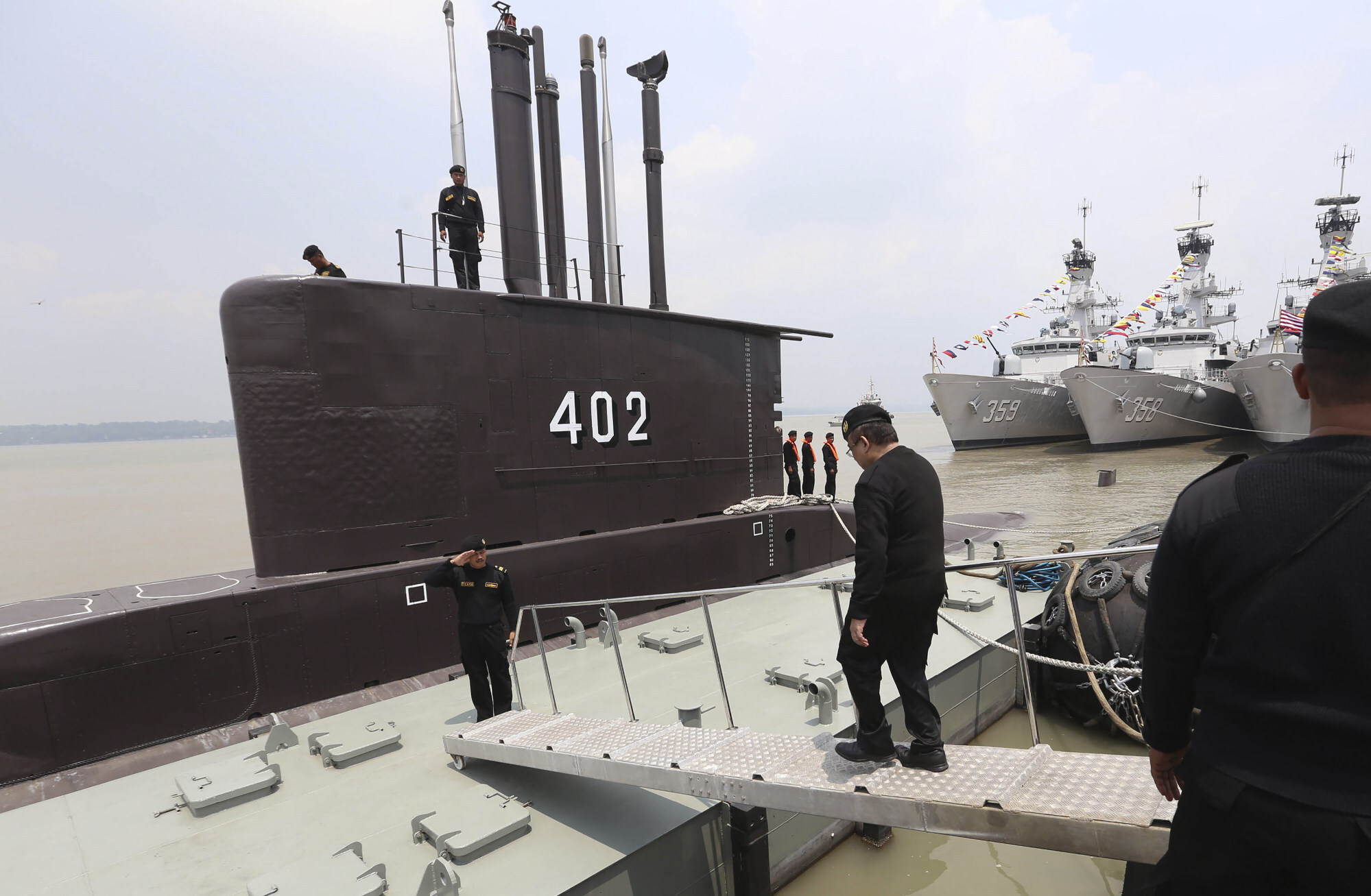
Indonesia racing to locate missing submarine as its oxygen will run out on Saturday
- Experts say the submarine, with 53 people on board, may have sunk too deep to be retrieved
- Officials reported an oil slick and the smell of diesel fuel near the starting position of its last dive, north of Bali
Indonesia’s navy ships on Thursday were intensely searching for a submarine that likely fell too deep to retrieve, making survival chances for the 53 people on board slim. Authorities said oxygen in the submarine would run out by early on Saturday.
The diesel-powered KRI Nanggala 402 was participating in a training exercise on Wednesday when it missed a scheduled reporting call. Officials reported an oil slick and the smell of diesel fuel near the starting position of its last dive, about 96km north of the resort island of Bali, though there has been no conclusive evidence that they are linked to the submarine.
“Hopefully we can rescue them before the oxygen has run out” at 3am on Saturday, Indonesia’s navy chief of staff, Adm. Yudo Margono, told reporters.
He said rescuers found an unidentified object with high magnetism in the area and that officials hope it’s the submarine.
The navy believes the submarine sank to a depth of 600-700 metres – much deeper than its collapse depth estimated at 200 metres by a firm that refitted the vessel in 2009-2012.
Ahn Guk-hyeon, an official from South Korea’s Daewoo Shipbuilding and Marine Engineering, said the submarine would collapse if it goes deeper than about 200 metres because of pressure. He said his company upgraded much of the Indonesian submarine’s internal structures and systems but it lacks latest information about the vessel.
Frank Owen, secretary of the Submarine Institute of Australia, also said the submarine could be at too great a depth for a rescue team to operate.
“Most rescue systems are really only rated to about 600 metres,” he said. “They can go deeper than that because they will have a safety margin built into the design, but the pumps and other systems that are associated with that may not have the capacity to operate. So they can survive at that depth, but not necessarily operate.”
Owen, a former submariner who developed an Australian submarine rescue system, said the Indonesian vessel was not fitted with a rescue seat around an escape hatch designed for underwater rescues. He said a rescue submarine would make a waterproof connection to a disabled submarine with a so-called skirt fitted over the recue seat so that the hatch can be opened without the disabled submarine filling with water.
Owen said the submarine could be recovered from 500 metres without any damage but couldn’t say if it would have imploded at 700 metres.

In November 2017, an Argentine submarine went missing with 44 crew members in the South Atlantic, almost a year before its wreckage was found at a depth of 800 metres. In 2019, a fire broke out on one of the Russian navy’s deep-sea research submersibles, killing 14 sailors.
Indonesia’s military said on Thursday that more than 20 navy ships, two submarines and five aircraft were searching an area where the submarine was last detected. A hydro-oceanographic survey ship equipped with underwater detection capabilities also was on its way to the site around the oil spills.
Margono said the oil slick may have been caused by a crack in the submarine’s tank after the vessel sank.
China vows to help coronavirus-hit Indonesia close vaccine divide
Neighbouring countries have rushed to join the complex operation.
Rescue ships from Singapore and Malaysia were expected to arrive between Saturday and Monday. The Indonesian military said Australia, the United States, Germany, France, Russia, India and Turkey have also offered assistance. South Korea said it has also offered help.
“The news of the missing submarine is deeply concerning,” Australian Foreign Minister Marise Payne said during a visit to New Zealand. “We will provide any assistance that we can. There’s no question that submarine search and rescues are very complex.”
Is Southeast Asia waking up to the need for unity in South China Sea?
Australian Defence Minister Peter Dutton called the incident “a terrible tragedy.” He told Sydney Radio 2GB that fact that the submarine is “in a very deep part of waters” makes it “very difficult for the recovery or for location”.
“Our fervent prayers and hopes go out to the crew of KRI Nanggala, for their safety and resilience,” Singapore’s Defence Minister Ng Eng Hen wrote on Facebook.
Indonesia’s navy said an electrical failure may have occurred during the dive, causing the submarine to lose control and become unable to undertake emergency procedures that would have allowed it to resurface. It was rehearsing for a missile-firing exercise on Thursday, which was eventually cancelled.

The German-built submarine, which has been in service in Indonesia since 1981, was carrying 49 crew members, its commander and three gunners, the Indonesian Defence Ministry said. It had maintenance and overhaul in Germany, Indonesia and most recently in South Korea, from 2007 to 2012.
The world’s largest archipelago nation with more than 17,000 islands has faced growing challenges to its maritime claims in recent years, including numerous incidents involving Chinese vessels near the Natuna islands.
Last year, President Joko Widodo reaffirmed the country’s sovereignty during a visit to the islands at the edge of the South China Sea, one of the busiest sea lanes where China is embroiled in territorial disputes with its smaller neighbours.

